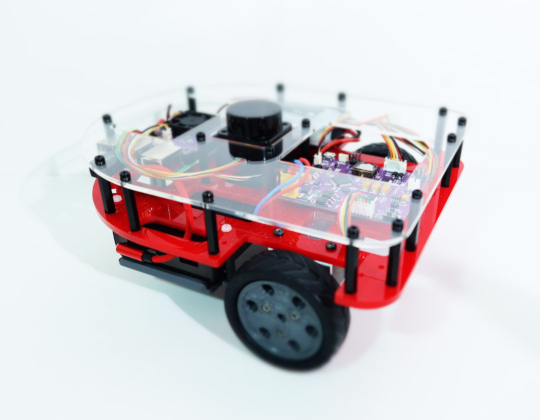ROS2 Compatible Hardware for
Purchase Now
What is the ROSRider?
ROSRider is a parametric robotics control card, designed with ROS use in mind. Configured with a YAML file, it allows ROS control any differential or ackerman drive robot up to a certain size.

Electronics Nervous System of a ROS robot.
Acada Robotics produces electronic nervous system of a ROS robot.
FXIMU provides high-fidelity IMU data, enabling use of EKF or UKF systems with ROS.
ROS2RPI is a cable elimination board, that allows power and pwm control of the LIDAR, the I2C connection to ROSRider, Serial Port Switching, and Fan Cooling.
The three products combined, allows users to build a fully ROS compatible autonomous robot.
20hz
Standard Update Rate
200hz
Suitable for fast setups
1ms
@20hz
Robotics Education should start directly from ROS. ROSRider project aims to lower the barrier of entry to world of ROS, allowing indivuduals use parts and components they already have.
Discover the World of ROS with ROSRider
Automatic Syncronization
ROSRider automatically synchronizes with the host system to minimize latency.
Open Source ROS Drivers
C++ based drivers for ROS2 Humble. Worry-free integration with ROS.
Parametric Customization
Explore a range of features and configurations for your robot.
Use existing components
If you have already built a robot, you can convert it into a ROS-compatible robot with our products.
What is ROS?
The Robot Operating System (ROS) is an open-source framework that helps researchers and developers build and reuse code between robotics applications. ROS is also a global open-source community of engineers, developers and hobbyists who contribute to making robots better, more accessible and available to everyone.
Who uses ROS?
ROS has been adopted into some of the biggest names in robotics. The majority of organisations are either using ROS as it can be installed by anyone or a fork of ROS in some form. And the use-cases are still growing. ROS is used across numerous industries from agriculture to medical devices to vacuum cleaners but is spreading to include all kinds of automation and software-defined dynamic use-cases.
Why use ROS?
- ROS was built with cross-collaboration in mind. The base code and knowledge can be applied across all robotics platforms (arms, drones, mobile bases, etc.) You'll be able to reuse what you already know and stop reinventing the wheel.
- ROS robots can speak any language. You can communicate easily between Python and C++ nodes, get libraries to allow you to use most other languages or install rosbridge and use any language that can speak JSON.
- ROS is here to stay. ROS and the community around it have been growing since 2007 thanks to contributions from an incredibly smart and open community. With the market share ROS has acquired and the ongoing development of ROS2, robots will be the future.
- There is a package for everything. Whether you want to compute trajectory, conduct SLAM algorithms or implement remote control, thereâs a ROS package for that.
- Digital twinning. ROS allows developers to easily simulate their robot in any environment, before deploying anything in the real world. Tools like Gazebo even allow you to create simulations with robots you donât possess.
- It is open-source. ROS has contributors all over the world using ROS for countless different purposes. Every contribution feeds into continuously developing, leading stack that ROS is.